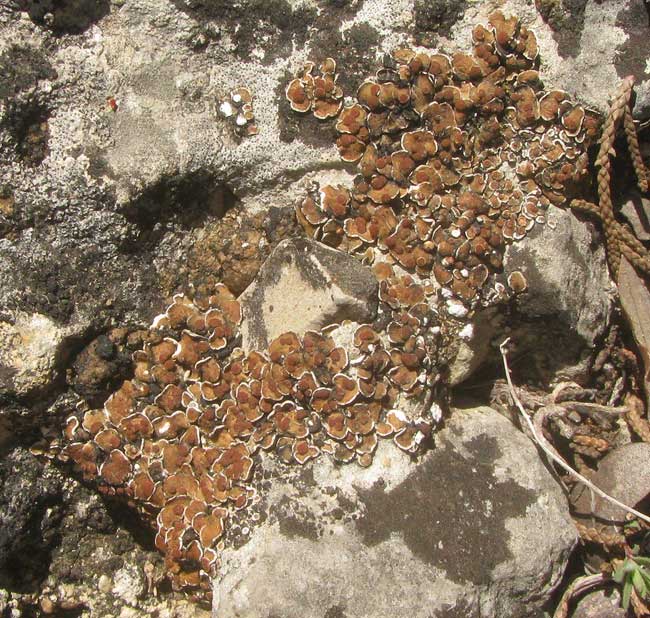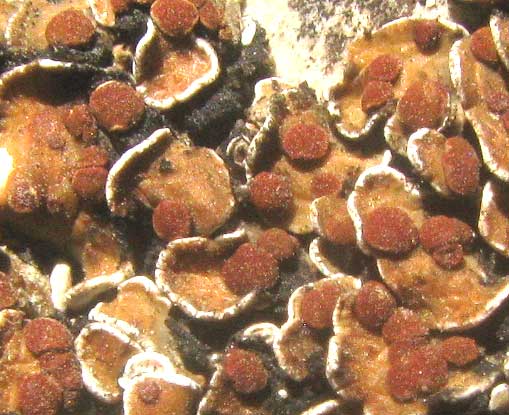Excerpts from Jim Conrad's
Naturalist Newsletter

from the January 26, 2014 Newsletter issued from the Frio Canyon Nature Education Center in the valley of the Dry Frio River in northern Uvalde County, southwestern Texas, on the southern border of the Edwards Plateau; elevation ~1750m (~5750 ft); N29.62°, W99.86°; USA
FISHSCALE LICHEN
Having so few plants flowering nowadays I headed to a certain stretch of the little Dry Frio River where bare limestone exposed to full sunlight, and humidity from the nearby river, combine to provide a good place for lichens. Soon an interesting, new-to-me species turned up, the one shown above.
Forming a small patch on a horizontal bed of limestone, this lichen was of the foliose type -- leaflike. However, instead of its leafy body, or thallus, forming a ribbon inching across the rock and maybe forking here and there, the way so many foliose lichens do, its bodies were like brown, white-fringed fingernails stuck on the rocks. And the thalli were small, only about 4mm wide (7/32nds inch). Moreover, most thalli bore even smaller, even darker brown, disk-like growths atop them, which show up better in the next picture:

Lichens often bear on their upper surfaces cuplike growths known as apothecia, in which fungal spores are produced for reproduction. But these apothecia are not at all concave and don't have a rim the way the vast majority of others do.
With such distinctive color scheme, the small size, and the curious apothecia, this lichen was fairly easy to identify. It's PSORA PSEUDORUSSELLII, known at least by the USDA as the False Russell's Fishscale Lichen. Our lichen is "false" because it's similar to and closely related to Psora russellii, known as Russell's Fishscale, and because that lichen's binomial honors Russell, that's the "true" one.
Our False Russell's Fishscale is distributed mostly in southeastern North America but it extends west to Arizona, then south into arid northern Mexico, plus it turns up in Mediterranean Europe. Its habitat is described as "calciferous rock in open habitats," and of course limestone is the classic calciferous rock.
Several fishscale lichen species, genus Psora, are known, all displaying slight variations on the fingernail-like "theme."